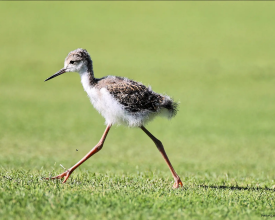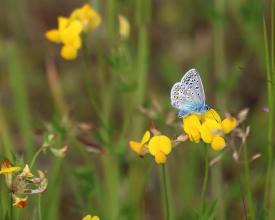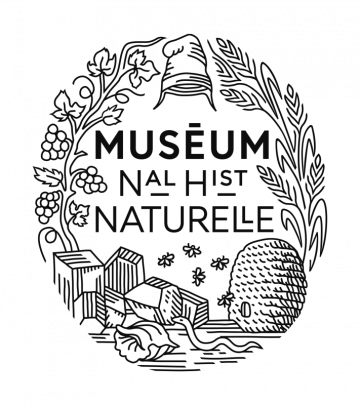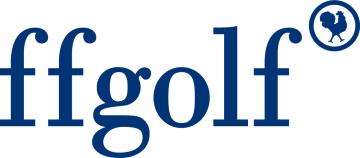
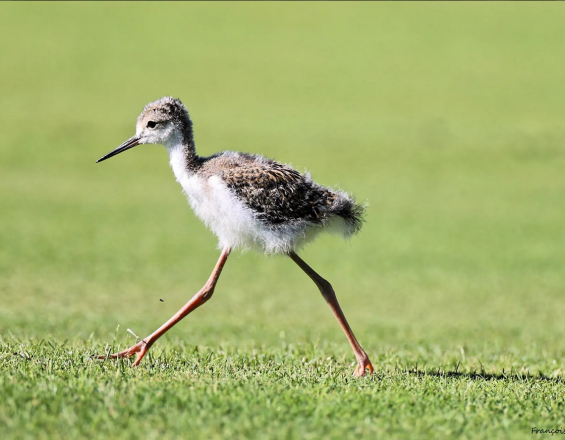
To better understand and preserve the rich yet under-documented biodiversity of golf courses, the French Golf Federation partnered with the National Museum of Natural History in 2016 to launch the Golf for Biodiversity Programme. The initiative aims to improve ecological knowledge, management, and conservation practices on golf courses in France. When joining the Programme, an ecological diagnostic is conducted on the golf course by a naturalist organisation and clubs implement tailored action plans based on expert recommendations. A Bronze, Silver, or Gold certification rewards efforts to study, protect, and promote biodiversity, based on the club's commitment level. Data collected feeds into the National Natural Heritage Inventory, advancing national scientific research. While the Museum gains valuable insights into previously overlooked ecosystems, clubs benefit from expert support, training, strong peer network, and enhanced image.
Context
Challenges addressed
The Golf for Biodiversity Programme helps overcome the technical and collaborative limitations often faced by golf clubs regarding biodiversity preservation and natural areas issues. It provides direct support from ffgolf and facilitates close cooperation with expert nature conservation groups, ensuring access to scientific knowledge. The Programme also tackles the general lack of biodiversity awareness among golfers by encouraging knowledge-sharing at the club level. Additionally, it addresses the challenge of enriching the National Natural Heritage Inventory by easing the burden of data collection, thanks to ecological diagnostics carried out on participating golf courses.
On the environmental side, golf courses can cause habitat loss, fragmentation, reduced species diversity, high water use, and pollution. By guiding clubs to assess the species and ecosystems present on their sites, the Programme promotes targeted management practices proposed by experts that help protect and enhance local biodiversity.
Location
Process
Summary of the process
The success of the Golf for Biodiversity Programme comes from how its main parts work together. The partnership between ffgolf and the Muséum National d’Histoire Naturelle combines practical golf knowledge with scientific expertise, making sure the programme stays credible and relevant. This collaboration supports a clear, step-by-step process that helps clubs assess their course, plan tailored management actions, and improve over time—with ongoing expert support and a dedicated online platform to track progress and connect with others. The three-level certification system engages clubs from the start and encourages them to keep improving over time. By recognising and promoting clubs’ efforts through a trusted label, the programme builds visibility, commitment, and a growing network of engaged participants—creating a cycle of support, action, and recognition that drives the programme’s success.
Building Blocks
A national-level collaboration between ffgolf and the National Museum of Natural History to valorise golf courses’ natural heritage
In 2016, the French Golf Federation (ffgolf) partnered with the National Museum of Natural History (MNHN), recognising both the biodiversity potential of golf courses and the need for scientific guidance. This collaboration led in 2018 to the launch of the Golf for Biodiversity Programme, which promotes knowledge, conservation, and valorisation of biodiversity across golf courses in France.
The partnership plays a foundational role in the programme. Ffgolf contributes sector-specific knowledge and stakeholder engagement, while MNHN provides scientific and technical expertise in biodiversity. Together, they bridge the gap between golf and nature conservation, pursuing shared goals. For instance, ffgolf helps inform local conservation groups about golf-specific biodiversity contexts so their input aligns with on-the-ground realities.
This collaboration remains central throughout implementation, with expert groups—trained and informed about the golf context—supporting clubs in conducting ecological diagnostics and proposing tailored management actions to preserve and enhance local biodiversity. The partnership continues to reinforce the Programme’s scientific foundations while strengthening synergies between sport and biodiversity conservation.
Enabling factors
- A cross-sector partnership combining ffgolf’s knowledge of golf operations with MNHN’s scientific expertise.
- A shared recognition of golf courses’ biodiversity potential and the need for tailored conservation action.
- Ongoing collaboration with conservation experts trained to align actions with golf course realities.
Lesson learned
- Collaboration between two seemingly unrelated fields – sport and nature conservation – offers each party the opportunity to explore the other's world. This coming together of distinct actors fosters a partnership that is mutually beneficial.
- By establishing a partnership with a leading institution in science and nature conservation, the ffgolf has legitimized its efforts and strengthened the credibility of the Golf for Biodiversity Programme, both nationally and locally. This recognition has also enabled the Programme to secure funding from the European Commission to support its expansion beyond French borders, with the aim of sharing best practices internationally.
- When visiting a golf course for the first time, naturalist organisations are often surprised by its ecological potential – on average, 50% of a course consists of natural habitats. Opening up the world of golf in this way also helps shift public perception of the sport, addressing one of its major current challenges.
A clearly structured accessible programme encouraging golf clubs’ progressive improvement in biodiversity conservation
The Golf for Biodiversity Programme is built on a structured and accessible approach that encourages participation and continuous improvement. Its clear step-by-step process—from engagement to certification—helps golf clubs understand what is expected and reduces barriers to entry.
Throughout each phase, clubs receive technical and scientific support from ffgolf and the National Museum of Natural History. This guidance, from ecological diagnostics to action planning, ensures that clubs are not alone in the process and strengthens their capacity to act effectively.
Participation is managed via a dedicated online platform where each club has a personal space to track progress, access resources, exchange with ffgolf, and connect with other committed clubs.
The programme’s tiered structure (Bronze, Silver, and Gold certification) allows clubs to begin regardless of their readiness, while motivating them to improve over time. This accessible yet ambitious model has helped engage over 30% of France’s golf clubs (220 clubs so far - summer 2025), making it a key driver of the programme’s success.
Enabling factors
- A tiered structure that makes the programme accessible to clubs regardless of their initial level of readiness.
- A user-friendly digital platform offering personalized club spaces, resources, and peer exchange to simplify participation.
- Continuous technical and scientific support provided by ffgolf (dedicated team) and the National Museum of Natural History.
Lesson learned
- The implementation of this step-by-step system required considerable work and coordination: working groups were set up to bring together the various stakeholders of the Programme – naturalists and representatives from the golfing world – to shape the current version, which requires clubs to take concrete action following the ecological assessment. In the earlier version of the Programme (prior to 2022), clubs could obtain the Certification simply by completing the ecological diagnostics.
- This step-based system requires strong coordination between the teams at ffgolf and the Museum. Within each organization, a dedicated staff member oversees the Programme: at ffgolf, this person supports clubs through every stage of the process, while at the Museum, they provide scientific and technical guidance.
- Implementing the programme requires genuine commitment from the club manager, as well as from the greenkeeper and the course maintenance teams. The programme is entirely voluntary and is not linked to any regulatory requirements. For some clubs, the cost of participation remains a barrier, which currently prevents all clubs from being able to take part.
A credible tiered certification system enhancing the commitment and visibility of golf clubs’ actions for biodiversity
The Golf for Biodiversity programme recognizes and promotes golf clubs’ efforts to protect and restore biodiversity with a dedicated label. It offers three progressive levels—bronze, silver, and gold—each based on specific, science-based criteria developed in collaboration with the MNHN. This three-level system ensures accessibility for clubs with varying capacities, while the time-limited validity (5 years) of the certification encourages clubs to renew their efforts regularly and demonstrate ongoing biodiversity action.
Certification (label) is awarded after an independent audit and a decision by a committee representing golf and biodiversity experts, ensuring compliance with requirements. This rigorous process enhances the label’s credibility.
By promoting the environmental commitment of certified clubs through various communication channels—including online platforms, newsletters, and a national map—the Certification strengthens their public image. It helps attract biodiversity-conscious players, fosters engagement with local nature stakeholders, and can support access to public funding.
Enabling factors
- A scientifically rigorous certification process to ensure credibility and consistency.
- A three-level labelling system designed to drive continuous improvement through increasingly ambitious biodiversity commitments.
- Active promotion and communication by ffgolf, enhancing the label’s visibility and appeal to players, local stakeholders, and funders.
Lesson learned
- One of the distinctive strengths of the programme lies in its three-tiered system, which enables clubs to engage progressively, including those just beginning their journey for biodiversity. For the most committed golf courses, the Gold level recognises excellence in biodiversity management. The Bronze / Silver / Gold structure is well aligned with the ethos of a sporting environment. However, the level of ambition required also means that not all clubs find it easy to take part.
- This Programme enables clubs to become fully integrated into their local area. Through biodiversity, connections are forged with local stakeholders – not only naturalist organisations, but also municipalities and local authorities. By reclaiming their place within the local environment, clubs help to bridge the gap between golf and its surroundings, which in turn shifts perceptions of the sport and fosters strong ties with the territory.
Impacts
Since its launch, the Golf for Biodiversity Programme has led to tangible conservation outcomes through close collaboration between biodiversity experts and golf course managers. This partnership has resulted in the design and implementation of tailored actions across more than 220 participating clubs, representing 30% of all golf courses in France.
A key outcome of this collaboration is the large-scale collection of scientific data: more than 100,000 records of fauna and flora species and 20,000 records of natural and semi-natural habitats have been gathered and shared through the National Natural Heritage Inventory. This open-access contribution strengthens national biodiversity monitoring efforts and supports ongoing scientific research led by the MNHN on biodiversity within golf courses.
To date, 140 clubs have earned the Golf for Biodiversity Certification, highlighting their long-term commitment. Through regular monitoring, the programme enhances understanding of ecological dynamics while raising awareness and credibility among golfers, biodiversity experts, local institutions, and the wider public. It also provides clubs with a scientifically grounded tool to demonstrate and communicate their biodiversity efforts.
By connecting recreational landscapes with conservation science, the programme delivers measurable environmental benefits and clearly demonstrates how sports infrastructure can actively contr
Beneficiaries
- Golf clubs owners, operators, managers and greenkeepers
- Golfers
- Local and national-level nature conservation organisations
- Local communities
- General public
- Scientific community
Global Biodiversity Framework (GBF)
Sustainable Development Goals
Story
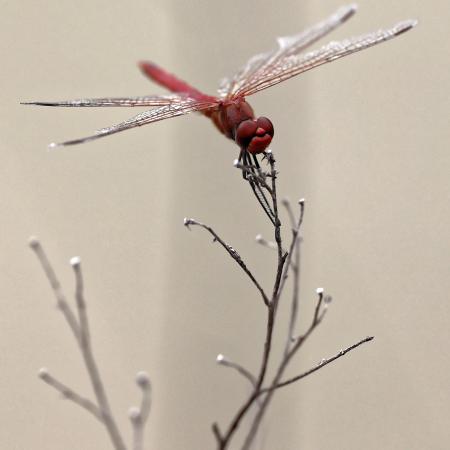
Reimagining Golf: The Biodiversity Journey of La Rochelle Sud
At Golf La Rochelle Sud, the commitment to biodiversity goes far beyond words – it’s embedded in every corner of the course. In 2023, the club became one of the first two golf clubs in France to be awarded the prestigious Gold certification in the Golf for Biodiversity Programme. "This Gold certification is truly a mark of excellence in terms of biodiversity," explained one of the programme leaders, highlighting the rarity and rigour of such recognition.
The club's journey began five years earlier with the Silver certification. Since then, Golf La Rochelle Sud has implemented a wide range of conservation actions, from restoring local roughs without herbicides in response to the Labbé Law, to recreating the characteristic dry and wet meadows of Charente-Maritime. In partnership with the Conservatory of Natural Spaces of Nouvelle-Aquitaine, they launched a research and development programme to rebuild native habitats on what was, until recently, purely agricultural land. The results speak for themselves: 365 plant species, 62 species of birds, 49 species of butterflies and orthopterans – an ecological richness that is both unexpected and inspiring.
But perhaps even more important than the numbers is the shift in perception the initiative helps foster. “It’s not easy to understand what biodiversity means on a golf course if you’ve never set foot on one,” the team acknowledges. By opening its gates to the public and connecting with the local community, Golf La Rochelle Sud is helping to rewrite the narrative: a golf course can be not only a place of sport, but a sanctuary for life, a driver of local engagement, and a model of environmental ambition.

